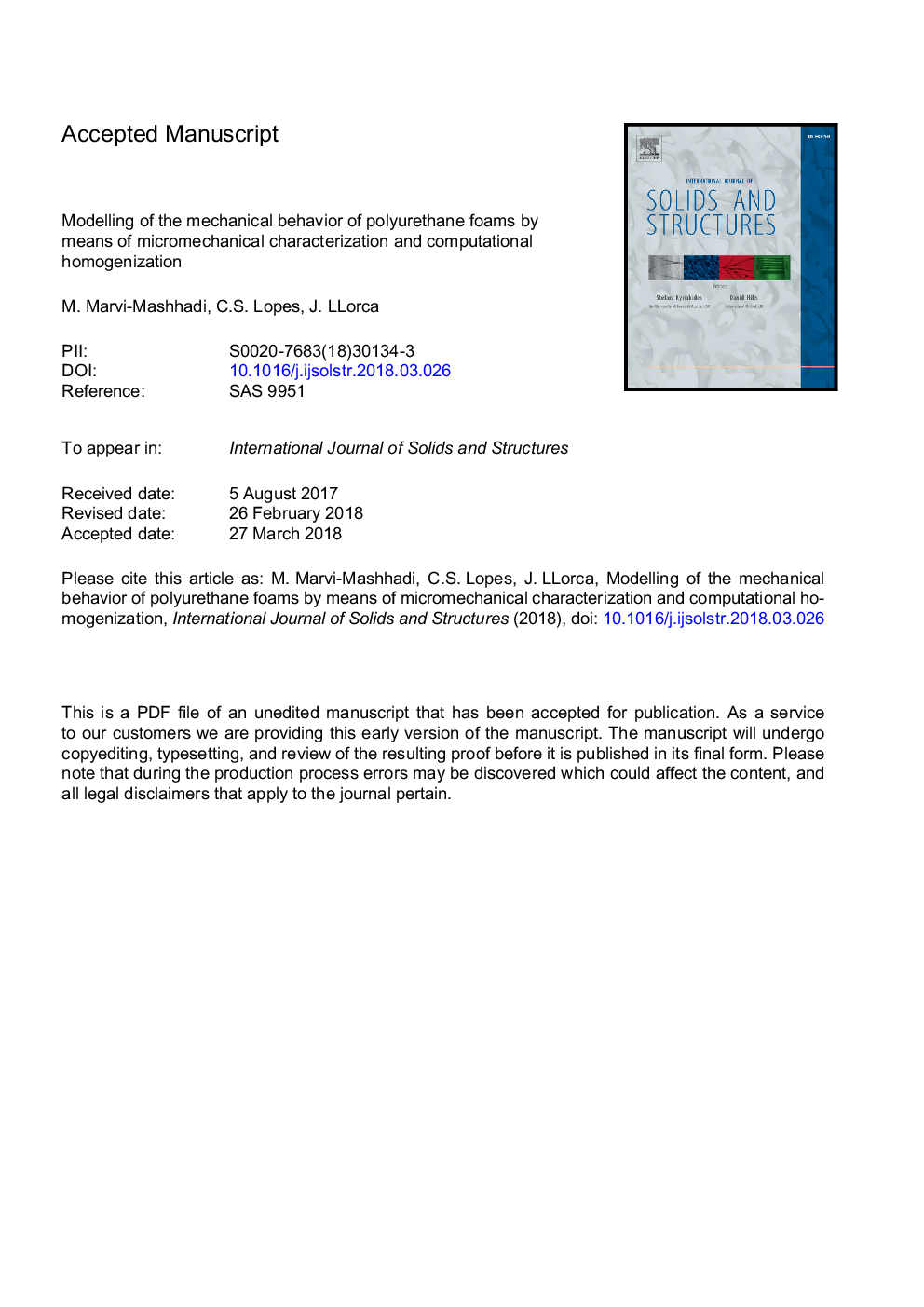| Article ID | Journal | Published Year | Pages | File Type |
|---|---|---|---|---|
| 6748250 | International Journal of Solids and Structures | 2018 | 36 Pages |
Abstract
A modelling strategy based on micromechanical characterization and computational homogenization has been developed to determine the mechanical behavior of rigid, closed-cell PU foams taking into account the microstructural features. The macroscopic mechanical properties of the foam were obtained by means of the finite element simulation of a representative volume element of the PU foam. The foam microstructure in the model was obtained from the Laguerre tessellation of the space from a random close-packed sphere distribution, which followed the cell size distribution of the foam. The faces and edges of the polyhedra representing the cell walls and struts and were discretized using shell and beam elements, respectively, and their geometric features (shape, thickness, etc.) were carefully measured by means of X-ray computed tomography. Finally, the elastic modulus and yield strength of the solid polyurethane in the foam were measured using instrumented nanoindentation. The numerical simulations of the mechanical behavior of the foam in compression were in agreement with the experimental results of the elastic modulus and of the stress at the onset of instability, which was triggered by the localization of damage in a section of the microstructure by the elasto-plastic buckling of the struts.
Related Topics
Physical Sciences and Engineering
Engineering
Civil and Structural Engineering
Authors
M. Marvi-Mashhadi, C.S. Lopes, J. LLorca,
